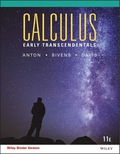
Let
(a) Use Lagrange multipliers to find the maximum value of
(b) Express
Want to see the full answer?
Check out a sample textbook solution
Chapter 13 Solutions
EBK CALCULUS EARLY TRANSCENDENTALS
Additional Math Textbook Solutions
Elementary & Intermediate Algebra
Probability And Statistical Inference (10th Edition)
College Algebra (7th Edition)
Introductory Statistics
Graphical Approach To College Algebra
A Problem Solving Approach To Mathematics For Elementary School Teachers (13th Edition)
- Find the derivative of the function. k(x) = − 6(5x +4) -arrow_forwardFind all values of x for the given function where the tangent line is horizontal. 3 =√x³-12x² + 45x+5arrow_forwardFind the equation of the tangent line to the graph of the given function at the given value of x. 6 f(x) = x(x² - 4x+5)*; x=2arrow_forward
- Algebra & Trigonometry with Analytic GeometryAlgebraISBN:9781133382119Author:SwokowskiPublisher:Cengage
